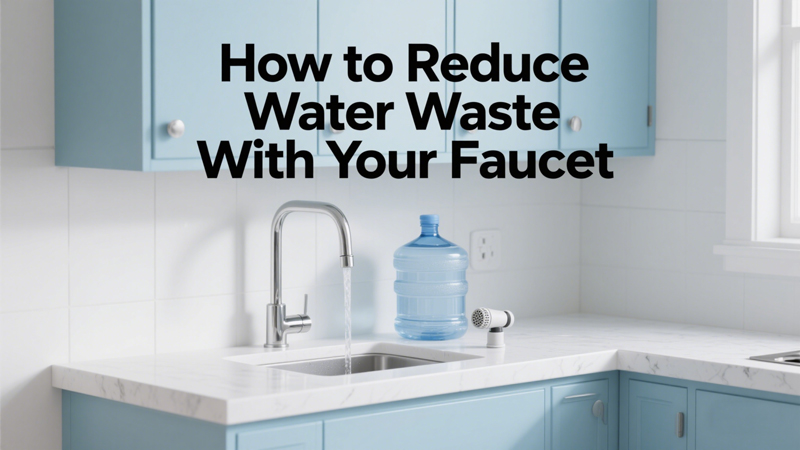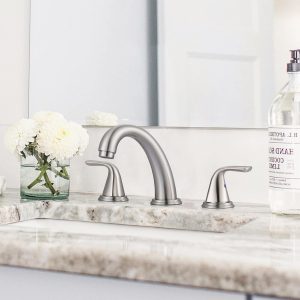Water is one of our planet’s most valuable and limited resources. Yet, the average household wastes nearly 10,000 gallons of water each year, much of it from inefficient fixtures and bad habits—especially faucets. Whether in the kitchen, bathroom, or utility room, faucets can be a major contributor to unnecessary water waste.
Fortunately, there are practical and often simple steps you can take to dramatically reduce the amount of water wasted through your faucets. These changes not only benefit the environment but can also help you save money on your water bills.
Here’s how to reduce water waste with your faucet, starting today.
1. Fix Leaks Immediately
One of the most common sources of water waste is a leaky faucet. A faucet dripping once per second can waste over 3,000 gallons per year.
Common causes of leaky faucets:
-
Worn-out washers or O-rings
-
Damaged cartridges
-
Corroded valve seats
-
Improper installation
Fixing a leak is often a simple DIY task. Most faucet leaks can be resolved by replacing a few inexpensive parts. If you’re unsure, a plumber can quickly identify and fix the issue.
Pro Tip:
Turn off the water supply before attempting any repairs and consult your faucet’s manual or the manufacturer’s website for specific parts.
2. Install a Faucet Aerator
Faucet aerators are small, inexpensive devices that screw onto the tip of the faucet. They mix air with water, reducing the flow rate while maintaining pressure. The result? You use less water without even noticing the difference.
Benefits of faucet aerators:
-
Reduce water flow from 2.2 GPM to as low as 0.5 GPM
-
Improve water pressure perception
-
Cost less than $10 and easy to install
Aerators are ideal for bathroom sinks where you don’t need a strong stream of water. Many utility companies offer them for free or at a discount as part of water conservation programs.
3. Switch to a Water-Efficient Faucet
If your faucet is more than 10 years old, it might be time to upgrade to a newer, more efficient model. Modern faucets are designed with water conservation in mind.
Look for:
-
WaterSense-labeled faucets: These meet EPA criteria and use at least 20% less water than standard models.
-
Low-flow faucets with adjustable settings
-
Touchless or sensor-activated faucets (they turn off automatically when not in use)
By upgrading, you could save hundreds of gallons of water annually without sacrificing performance or style.
4. Use Touchless Faucets
Touchless faucets, commonly found in public restrooms, are becoming increasingly popular in homes. These faucets use sensors to detect when hands are underneath, turning water on or off automatically.
Advantages:
-
Prevent accidental overuse
-
Reduce cross-contamination
-
Ideal for kids and seniors
Touchless faucets are particularly effective in high-traffic areas like kitchens and shared bathrooms, where frequent hand washing can lead to unnecessary water usage if the faucet isn’t turned off promptly.
5. Turn Off the Tap When Not in Use
This is one of the easiest ways to reduce faucet-related water waste and yet often overlooked.
Simple habit changes:
-
Don’t let the water run while brushing your teeth
-
Fill the sink when washing dishes instead of letting water run
-
Turn off the tap when scrubbing hands or vegetables
Even these minor changes can make a big difference. For example, turning off the tap while brushing your teeth can save up to 8 gallons of water per day.
6. Catch and Reuse Water
While you’re waiting for tap water to warm up, a surprising amount goes straight down the drain. Instead of wasting it, consider collecting this “clean runoff” in a bucket or container.
Reuse ideas:
-
Watering houseplants or the garden
-
Flushing toilets
-
Cleaning floors or outdoor surfaces
If every household saved just one gallon per day this way, it would add up to billions of gallons saved annually.
7. Educate Your Household
Water conservation is a team effort. Make sure all household members, including children, understand the importance of saving water and the role faucets play in that effort.
Tips to get everyone involved:
-
Post a water-saving checklist near sinks
-
Use stickers or signs to remind users to turn off taps
-
Make water conservation a game for kids (e.g., timing their brushing or hand washing with a cup of water)
Small reminders can instill long-term habits that significantly reduce your household’s water footprint.
8. Schedule Regular Maintenance
Preventive maintenance ensures that faucets work efficiently and don’t develop leaks or blockages. Mineral buildup can also reduce flow and pressure, causing people to keep faucets on longer than necessary.
Maintenance checklist:
-
Clean aerators and faucet heads every few months
-
Check under the sink for hidden leaks
-
Replace old washers and seals as needed
-
Inspect hoses and connections for wear or corrosion
Regular care not only extends the life of your faucets but also helps catch waste issues before they become major problems.
Conclusion
Reducing water waste with your faucet is easier than you think. Whether you’re upgrading to a more efficient model, fixing a persistent leak, or simply changing everyday habits, every action makes a difference.
Start with one or two changes from the list above, and you’ll not only be conserving a precious resource—you’ll also be lowering your water bills and helping the planet.









